Key takeaways:
- Child safeguarding processes require clear policies, consistent staff training, and effective communication to create a safe environment for children.
- Inclusive decision-making ensures that diverse voices, particularly those of children, are heard, strengthening community trust and enhancing safeguarding strategies.
- Engaging children directly in discussions about safety reveals valuable insights and fosters a child-centered approach in safeguarding initiatives.
- Continuous feedback and collaboration in decision-making processes are essential for successful implementation and adaptability in safeguarding policies.
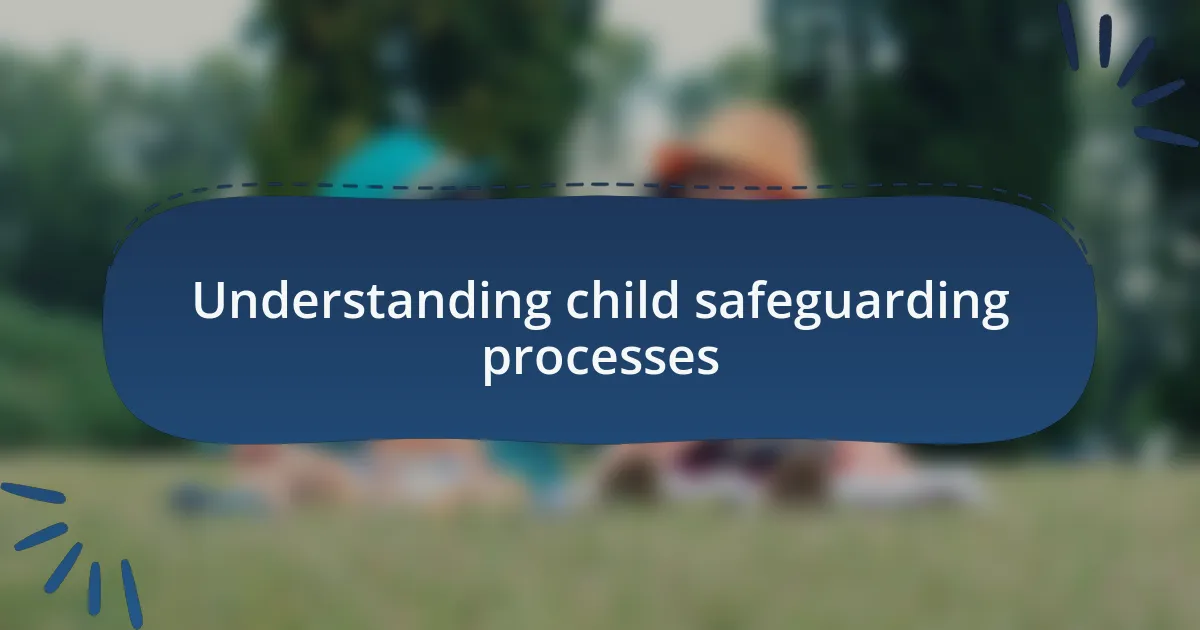
Understanding child safeguarding processes
Child safeguarding processes are vital in creating a safe environment for children. I’ve seen firsthand how clear policies can shape a protective framework, allowing everyone involved—from parents to educators—to understand their roles in keeping children safe. Have you ever considered how every small decision can contribute to a larger culture of safety?
As I reflect on past experiences in various childcare settings, I realize that consistent training for staff is crucial. It’s not just about having procedures in place; it’s about ensuring everyone feels equipped and confident to act when necessary. I remember a situation where a staff member recognized signs of distress in a child and acted swiftly because of the training they received. This made me ponder: how often do we invest in empowering our caregivers?
Effective communication plays a pivotal role in safeguarding processes. In discussions with parents, I’ve noticed how open channels can lead to vital insights about a child’s well-being. When we share our observations, we create a tapestry of information that can inform better decisions. So, how can we foster an environment where everyone feels comfortable sharing their thoughts?
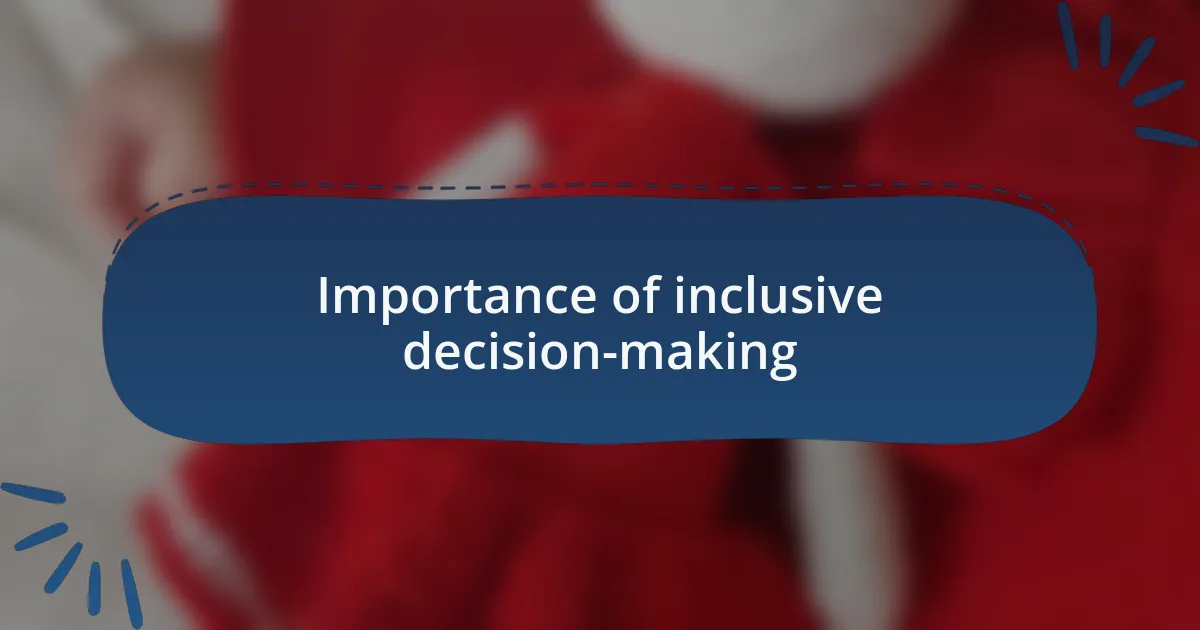
Importance of inclusive decision-making
Inclusive decision-making is essential in child safeguarding because it ensures that all voices, especially those of children and marginalized groups, are heard. I remember a time when we engaged children in discussions about safety, and their perspectives were eye-opening. It made me realize how often we overlook their insights, which can lead to more effective safeguarding measures. Have you ever thought about the knowledge children bring to the table that can significantly enhance our strategies?
Moreover, when decisions are made inclusively, it cultivates a sense of ownership and accountability among all stakeholders. I’ve witnessed environments where families felt empowered to contribute to safety discussions, resulting in tailored solutions that better fit their unique contexts. This dynamic not only strengthens the community’s commitment but also fosters trust. Are we doing enough to invite such collaboration in our decision-making processes?
Additionally, inclusive decision-making fosters innovation and adaptability. I recall a meeting where diverse perspectives led us to develop a unique awareness campaign that resonated deeply within the community. It struck me how diverse experiences can spark creative solutions that we might never have considered otherwise. How often do we genuinely seek out diverse voices in our planning sessions? Embracing inclusivity can transform our approach to safeguarding children, ultimately leading to a more comprehensive and effective strategy.
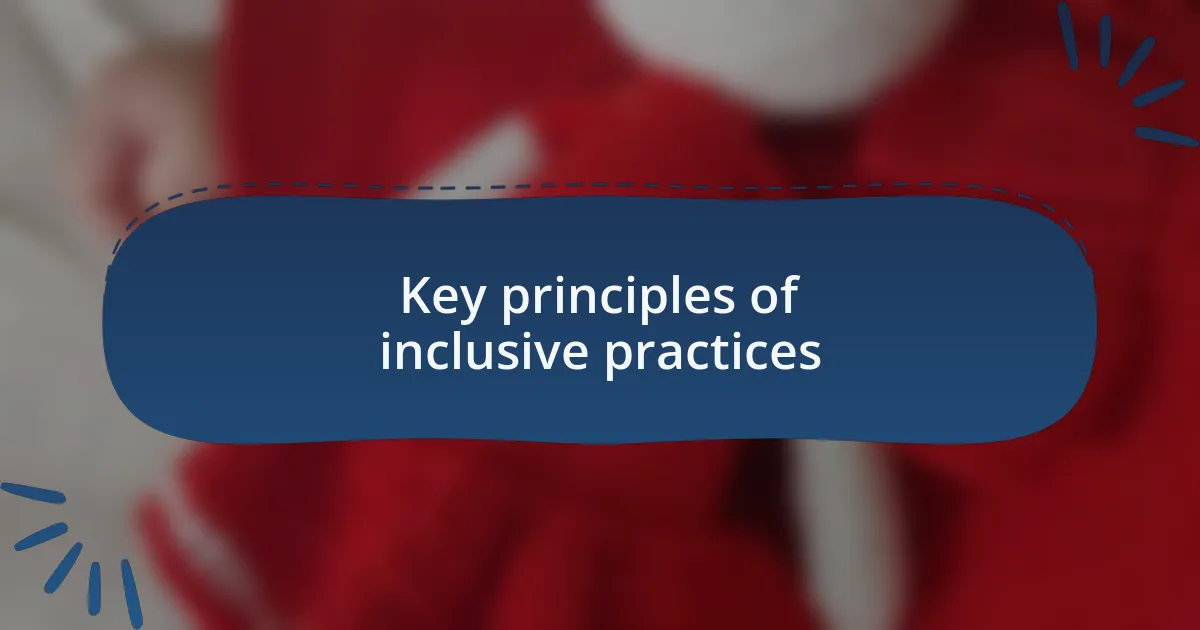
Key principles of inclusive practices
Inclusive practices rest on several key principles that drive effective decision-making. First and foremost, genuine engagement is crucial. I recall an instance when we held a workshop where children were encouraged to share their stories about safety. Their candidness revealed fears and concerns that adults often underestimate. This reminded me of the power of simply listening—are we fully prepared to hear what these young voices have to say?
Another vital principle is the acknowledgment of diverse needs and perspectives. In my experience, I have seen how crucial it is to consider that every child’s background influences their understanding of safety. For example, when working with a community of refugees, we realized that tailoring our messaging to their unique experiences greatly enhanced their trust and engagement in safeguarding efforts. Are we actively adapting our approaches to serve every child effectively, or are we still applying a one-size-fits-all solution?
Finally, fostering a culture of collaboration is essential for inclusivity. I vividly remember a project where different stakeholders, including community leaders and parents, came together to create solutions. The synergy was palpable; it wasn’t just about decision-making but building relationships. It made me wonder, how often do we create spaces for such collaborative magic to happen in our safeguarding initiatives? Being intentional about collaboration can lead to decisions that genuinely reflect the community’s needs and aspirations.
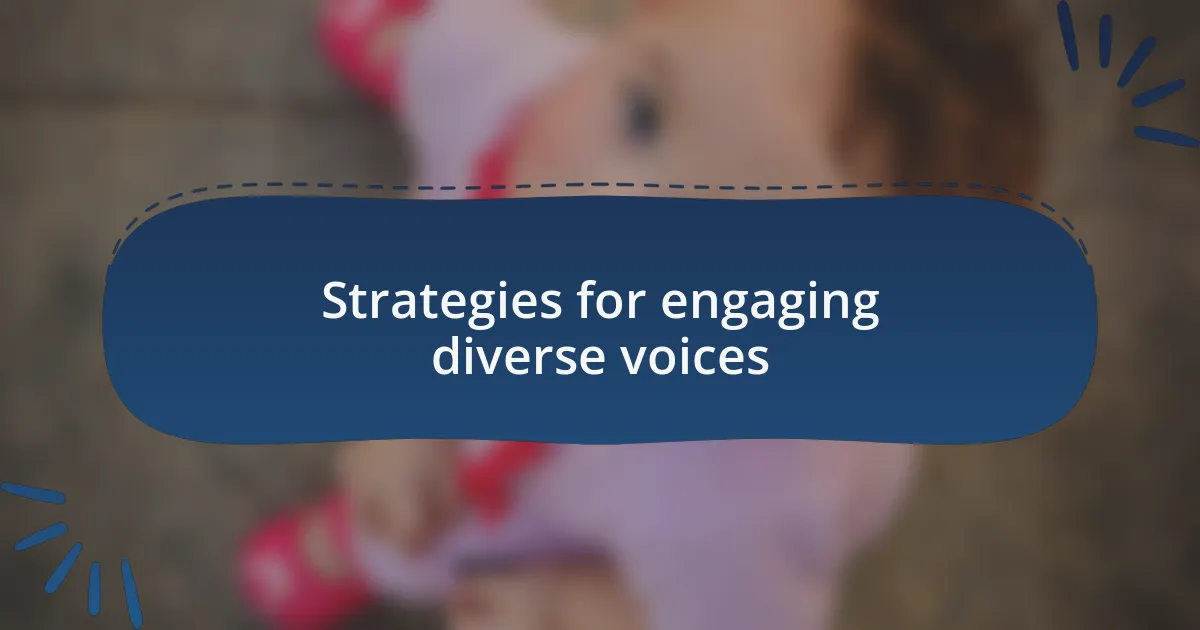
Strategies for engaging diverse voices
Engaging diverse voices in decision-making requires intentional outreach strategies. For instance, I once organized a series of informal “listening sessions” in local parks where families could gather. The relaxed environment encouraged open dialogue, and I was astonished by the diverse perspectives shared in such an informal setting. Would we be more effective if we created more spaces where individuals feel comfortable expressing their thoughts?
Utilizing technology can also play a pivotal role in amplifying diverse voices. In a recent project, we developed an online survey that allowed children and families to share their thoughts anonymously. The feedback we received was eye-opening—some concerns that were rarely voiced in group settings emerged, leading to significant changes in our program. Have we explored innovative ways to reach those who might not speak up in traditional formats?
Finally, actively recruiting representatives from underrepresented communities can enrich the decision-making process. During a consultation, I was fortunate to work alongside a youth advisory board that included representatives from various cultural backgrounds. Their insights added depth to our discussions and challenged our assumptions. Are we truly reflecting the diversity of the population we serve, or are we missing out on pivotal voices that could reshape our understanding of safeguarding?
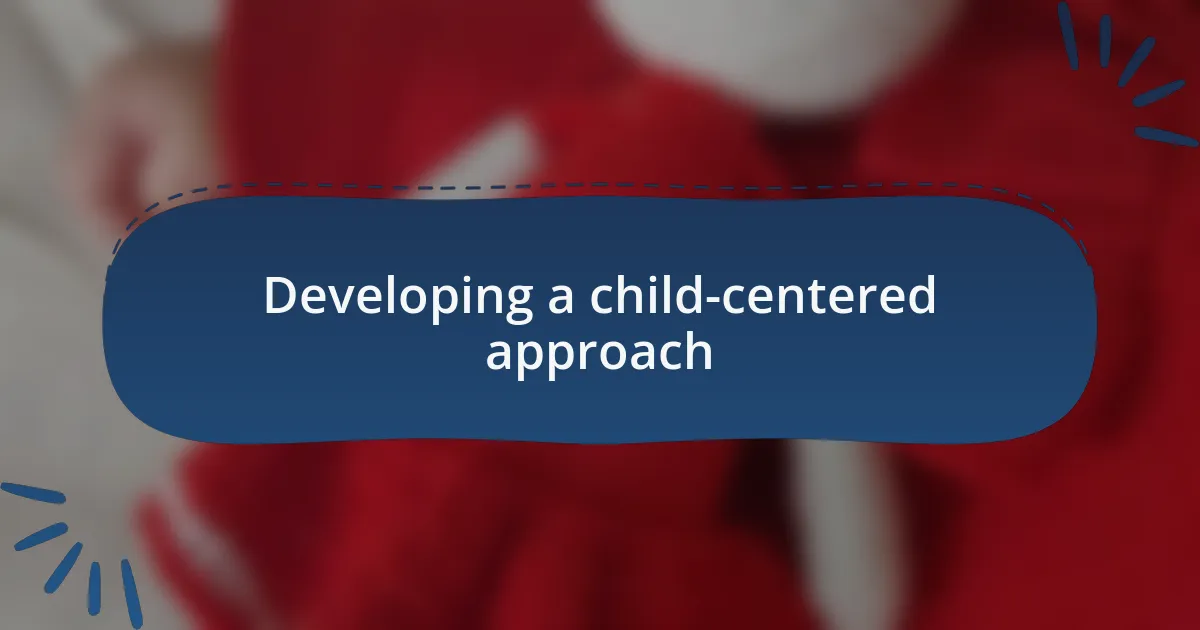
Developing a child-centered approach
Developing a child-centered approach means placing the voices of children at the forefront of decision-making. I remember facilitating a workshop where young participants created their own “wish lists” for a safe environment. Their creativity and honesty shocked me; they shared feelings I hadn’t fully understood before, and it made me realize how crucial it is to listen to children directly. Are we truly considering what makes them feel safe, or are we projecting our ideas onto them?
In my experience, incorporating children’s perspectives not only empowers them but also enriches the overall safeguarding process. One time, I asked children to draw what “safety” looked like to them. The drawings revealed their unique fears, priorities, and dreams, highlighting aspects that adults often overlook. This exercise reminded me that when we include children in shaping policies, we’re not just paying lip service; we’re genuinely crafting solutions that resonate with their experiences. How often do we explore what safety means from their viewpoint?
Lastly, ensuring that our approach is adaptable at every level is vital. During a project, I noticed that adjusting our language and activities to be age-appropriate significantly increased engagement. When I took the time to break down complex concepts into simple, relatable terms for younger children, their eyes lit up. It was a revelation for me: Are we making it easy for children to express themselves, or are we inadvertently creating barriers? By nurturing a child-centered approach, we pave the way for more effective safeguarding initiatives that truly reflect their needs.
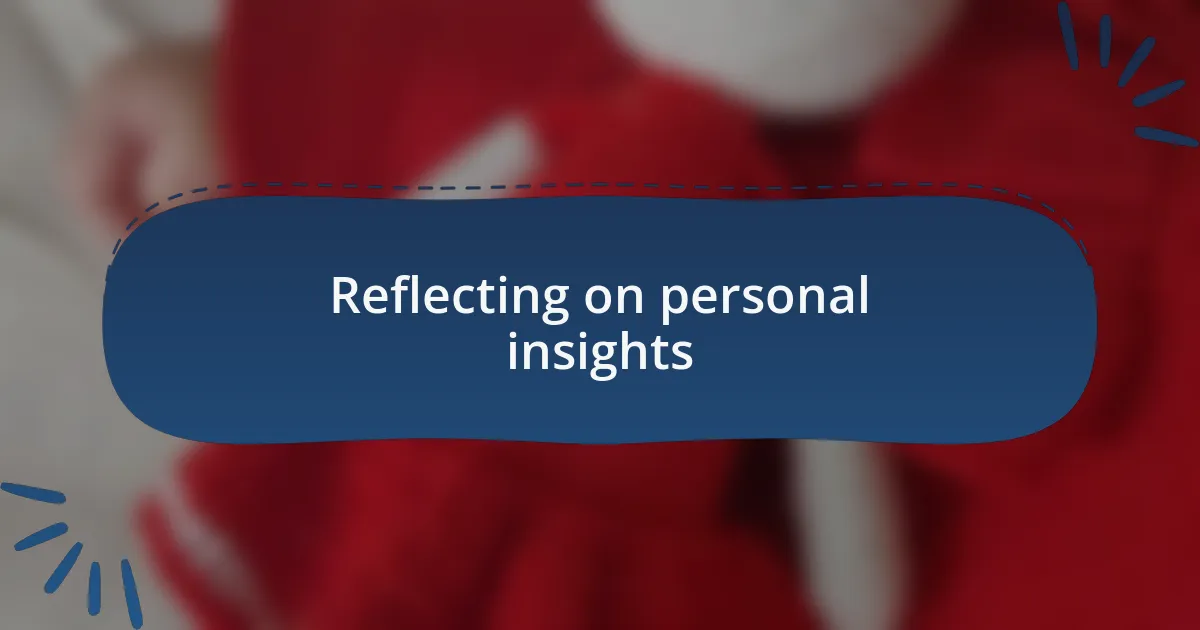
Reflecting on personal insights
Reflecting on personal insights, I often find myself thinking about a moment during a community meeting where parents were discussing their children’s fears. The vulnerability in their voices struck me deeply; it was a stark reminder of how important it is to create an environment where everyone feels safe to speak. Are we providing enough spaces for open dialogue that encourage heartfelt sharing, or are we unintentionally silencing those voices?
As I’ve navigated various decision-making processes, I’ve realized that the relationships we build with children and families directly impact our effectiveness. Once, while shadowing a social worker, I witnessed a child’s face light up when their opinion was acknowledged in a group setting. That moment highlighted the profound impact that inclusivity can have—how it fosters trust and encourages children to feel like their voices matter. How often do we stop to reflect on the weight of our decisions and their ripple effects in the lives of those we serve?
There’s also a humbling aspect to recognizing our own biases in these conversations. I vividly recall a discussion where I initially misinterpreted a child’s comment, thinking I understood their perspective. When I took a step back and sought clarification, I learned something entirely different. This experience taught me that humility is key; it’s essential for us to constantly check our assumptions and be open to learning from those we’re trying to protect. Are we truly prepared to listen and adapt, or do we allow our preconceived notions to guide our actions?
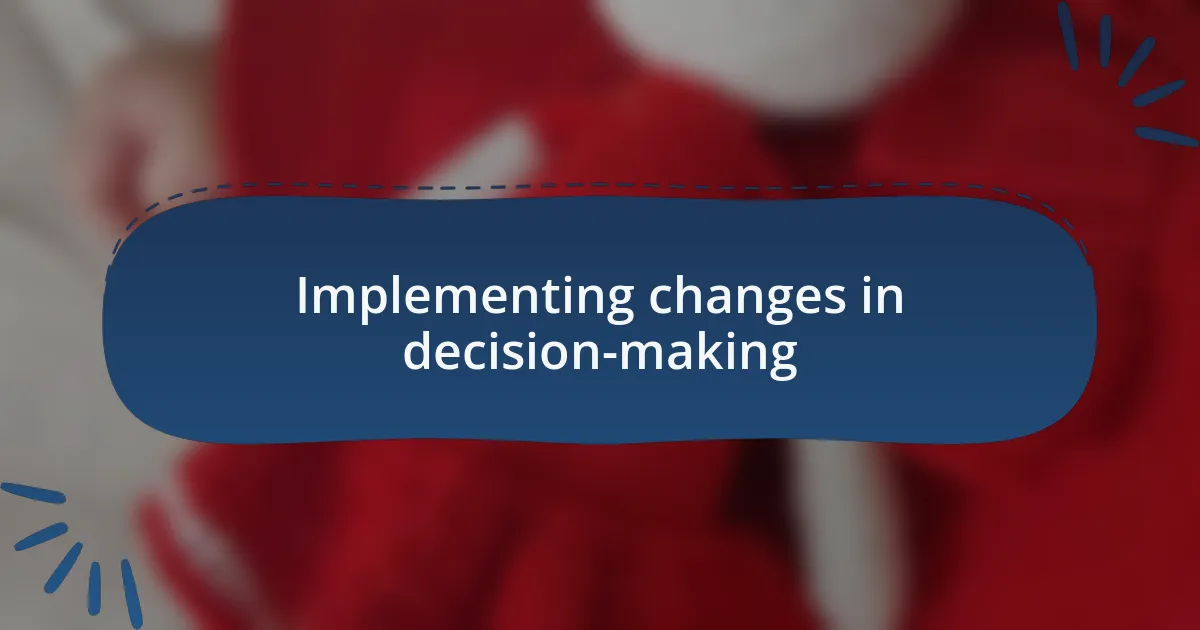
Implementing changes in decision-making
Implementing changes in decision-making starts with acknowledging the need for a shift in how we engage with families and children. I remember attending a workshop where the facilitator introduced techniques for collaborative decision-making. It struck me how simply shifting the approach from directing to involving everyone transformed the energy in the room. Why don’t we adopt approaches that empower rather than dictate?
As I began applying some of those techniques in my own practice, I faced challenges. Once, when I introduced a new collaborative framework in a meeting with parents, I initially encountered resistance. Instead of embracing the change, some felt threatened by losing their previous roles. It was a turning point for me; I learned that effective implementation requires patience and consistent reassurance. How can we better equip our teams to navigate these transitions smoothly?
To truly embed inclusive decision-making, I find that continuous feedback is crucial. In crafting new policies with a group of caregivers and children, we conducted regular check-ins to evaluate how they felt about the changes. Their candid feedback often revealed insights I hadn’t considered, which made the final decisions far better. Isn’t it astonishing to think how much richer our outcomes can become when we remain committed to listening?